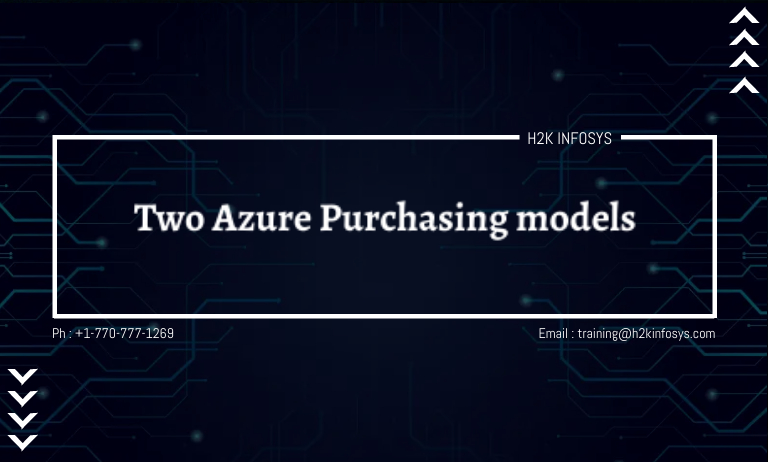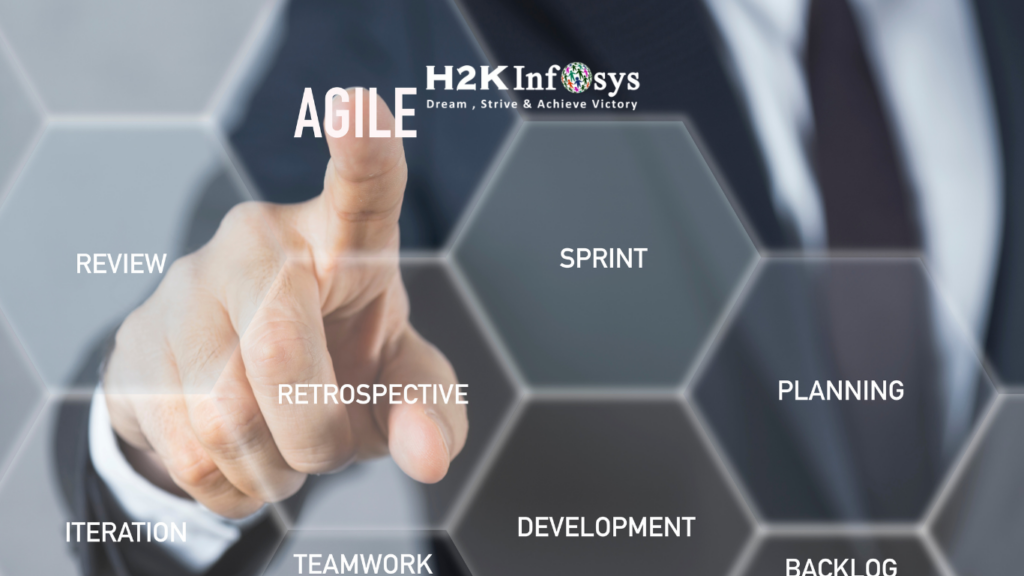There are two models using which the Azure database can be purchased. Vcore-based and DTU based models.
V core (virtual core) purchasing model:
Purchasing model which is based upon the Vcore which allows us to choose the number of Vcore and the amount of memory, and speed of storage, this model will allow the making use of the Azure hybrid benefit of the SQL server for cost savings.
DTU based purchasing model (Data Transaction Unit):
DTU based model will offer to blend the computer, memory, and I/O resources in three services tiers. They will support heavy database workloads and the computer sizes within each tier to provide a different mix of these resources.
Compute costs:
1. The cost can be based on computing capacity provided for applications called provisioned costs
2. Serverless model which will quickly scale the compute which is based upon the workload and the bills for the number of computing users per second.
Service tiers of the azure SQL
Azure SQL database will offer three services tiers which are designed for the different types of applications:
- General purpose: this service tier has been designed for the common work stuffs which will offer budget oriented and balanced compute and storage options.
- Business critical: this service tier will be designed for the applications with the high transaction rate and lowest latency i/o. They offer the highest capacity to recover quickly from the difficulties or toughness by using several isolated replicas.
Azure SQL data keeps on giving the advanced monitoring and also the troubleshooting features which will help to get deeper insights into the workload, the features and tools include:
- Built in monitoring capabilities which will provide by the version of the SQL server database engine.
- PaaS keep tracks and provides the capabilities that are provided by the Azure allows to monitor and trouble shoot large number of the database.
Query Store is the built-in SQL server monitoring feature that records the performance of the queries in real-time to enable us to identify the potential performance and also the top resources. Azure provides built-in performance monitoring and altering tools which are combined with the performance ratings that enable us to monitor the status of thousands of databases.
SQL database will emit the resources logs which makes it easier for monitoring the status of thousands of databases and store resource usage, workers, and also sessions where connectivity into one of the Azure resources:
- Azure storage: this will be used for the archiving vast amount of telemetry for the small price.
- Azure event hubs: this is used for the integration SQL database with our custom monitoring solution or the pipeline.
- Azure monitor logs: this will be used for the built in monitoring solution with making reports, alerting the capabilities.
Azure SQL database enables our business which will continue the operation during disruption and in the earlier server environment where it will have at least two machines local set up. These processes will be having accurate copies of the data which will protect against failure of a single machine or the component. This environment will provide high availability but it will not protect against natural disasters in the data center.
Questions
- What is purchasing model? Explain briefly





























7 Responses
Two Azure Purchasing models
There are two models using which the Azure database can be purchased. Vcore-based and DTU based models.
V core (virtual core) purchasing model:
Purchasing model which is based upon the Vcore which allows us to choose the number of Vcore and the amount of memory, and speed of storage, this model will allow the making use of the Azure hybrid benefit of the SQL server for cost savings.
DTU based purchasing model (Data Transaction Unit):
DTU based model will offer to blend the computer, memory, and I/O resources in three services tiers. They will support heavy database workloads and the computer sizes within each tier to provide a different mix of these resources.
Azure SQL Database can be easily purchased a fully managed platform as a service (PaaS) database engine that fits your performance and cost needs. This purchasing model provides a choice between a provisioned compute tier and a server less compute tier.
There are two types of purchasing models in Azure:
Virtual core (vCore) represents a logical CPU and offers the option to choose between generations of hardware and the physical characteristics of the hardware (example, the number of cores, the memory, and the storage size). The vCore-based purchasing model gives flexibility, control, transparency of individual resource consumption, and a straightforward way to translate on-premises workload requirements to the cloud. This model optimizes price, and allows to choose compute, memory, and storage resources based on workload needs.
In order to understand the DTU-Based purchase model , DTU is “Database Transaction Unit” and it describes a performance unit metric for the Azure SQL Database. DTU is a mixture of the following performance metrics as a single performance unit for Azure SQL Database: CPU, Memory, Data I/O and Log I/O.
V core and DTU (data transaction unit) based purchasing model this two are the purchasing model. V core which allows us to choose the number of V core and the amount of memory, and speed of storage, this model will allow the making use of the Azure hybrid benefit of the SQL server for cost savings.
DTU based model will offer to blend the computer, memory, and I/O resources in three services tiers. They will support heavy database workloads and the computer sizes within each tier to provide a different mix of these resource
Azure database can be purchased using 2 models as listed below:
1. In vCore-based purchasing model (virtual core model) : It computes and storage resources, match on-premises performance, and optimize price can be choose independently. This model mill make use of the Azure hybrid benefit of the SQL server for cost savings.
2. DTU based purchasing model : A database transaction unit (DTU) represents a blended measure of CPU, memory, reads, and writes. Service tiers in the DTU-based purchasing model are differentiated by a range of compute sizes with a fixed amount of included storage, fixed retention period for backups, and fixed price They will support heavy database workloads and the computer sizes within each tier to provide a different mix of these resources.
here are two models using which the Azure database can be purchased. Vcore-based and DTU based models.
V core (virtual core) purchasing model:
Purchasing model which is based upon the Vcore which allows us to choose the number of Vcore and the amount of memory, and speed of storage, this model will allow the making use of the Azure hybrid benefit of the SQL server for cost savings.DTU based model will offer to blend the computer, memory, and I/O resources in three services tiers. They will support heavy database workloads and the computer sizes within each tier to provide a different mix of these resources.Service tiers of the azure SQL
Azure SQL database will offer three services tiers which are designed for the different types of applications:
General purpose: this service tier has been designed for the common work stuffs which will offer budget oriented and balanced compute and storage options.
Business critical: this service tier will be designed for the applications with the high transaction rate and lowest latency i/o. They offer the highest capacity to recover quickly from the difficulties or toughness by using several isolated replicas.
There are two models using which the Azure database can be purchased. Vcore-based and DTU based models.
V core (virtual core) purchasing model:
Purchasing model which is based upon the Vcore which allows us to choose the number of Vcore and the amount of memory, and speed of storage, this model will allow the making use of the Azure hybrid benefit of the SQL server for cost savings.
DTU based purchasing model (Data Transaction Unit):
DTU based model will offer to blend the computer, memory, and I/O resources in three services tiers. They will support heavy database workloads and the computer sizes within each tier to provide a different mix of these resources.
There are two types of purchasing models in Azure:
1.V core model- A virtual core is a logical CPU and offers the option to choose between generations of hardware and the physical characteristics of the hardware .
In the V Core-based purchasing model, you can choose between the general purpose and business critical service tiers for single databases, elastic pools, and managed instances. For single databases, you can also choose the hyperscale service tier.
2. DUT – A Database Transaction Unit (DTU) is blended measure compute, storage, reads and writes. The DTU-based purchasing model offers a set of preconfigured bundles of compute resources and included storage to drive different levels of application performance.
If you prefer the simplicity of a preconfigured bundle and fixed payments each month, the DTU-based model might be more suitable for your needs.
In the DTU-based purchasing model, you can choose between the basic, standard, and premium service tiers for both single databases and elastic pools. The DTU-based purchasing model isn’t available for managed instances.